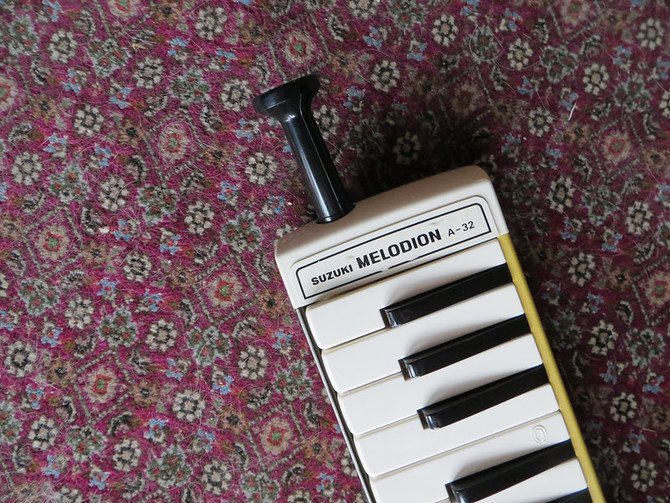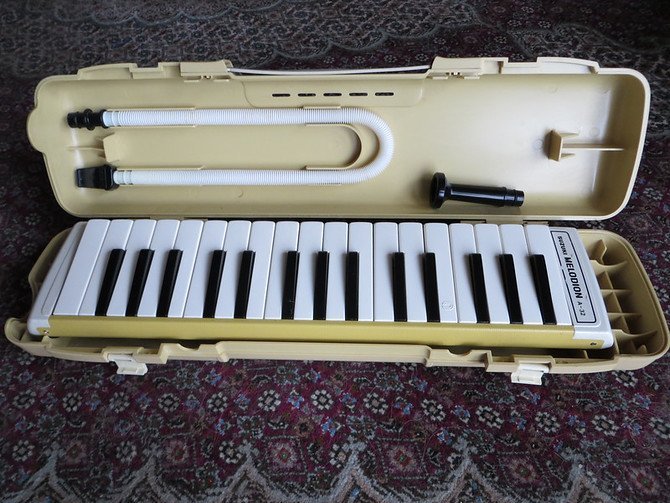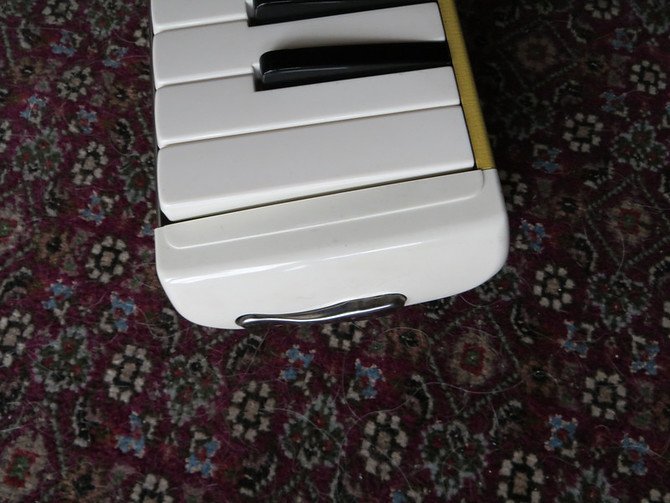Suzuki A-32
Tagged: Suzuki A-32
- This topic has 0 replies, 4 voices, and was last updated 8 years, 12 months ago by
 Alan Brinton.
Alan Brinton.
-
AuthorPosts
-
December 10, 2014 at 10:36 pm #3540
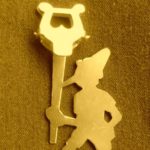 Alan BrintonParticipant
Alan BrintonParticipant1973-82. Bought this on Yahoo Auctions Japan. It is in excellent condition. This is the second model of the A-32 and was replaced by the M-32. “A” I suppose is for alto and “M” for Melodion. Most of the screws were loose and it was leaky. But tightening all screws made it air tight.
This arrived with tube but no mouthpiece. The original mouthpiece is a straight one.
December 10, 2014 at 10:41 pm #3541 Alan BrintonParticipantDecember 10, 2014 at 10:49 pm #3542
Alan BrintonParticipantDecember 10, 2014 at 10:49 pm #3542 Alan BrintonParticipant
Alan BrintonParticipantThis melodion, delivered from Japan, cost less than a new M-32C. It is every bit as playable, its functional equivalent, but is a distinctive looking vintage instrument. The color is the typical yellow of vintage Suzukis and Yamahas, much more professional looking than the toyish colors of some more recent melodicas.
December 11, 2014 at 2:31 am #3543 Adam TombsParticipant
Adam TombsParticipantVery nice Alan.
December 13, 2014 at 11:35 pm #3550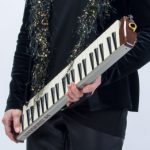 barbParticipant
barbParticipantthanks Aan!
December 14, 2014 at 3:22 pm #3553 DarenKeymaster
DarenKeymasterThanks Alan, I like the design of this melodica. Any chance of posting a close up of one of the key pads, and the underside of a key? I’d really like to see if there’s a gasket attached to each individual pad (unlike modern instruments), and also how the pad attaches to the key (rather than the ‘one mould’ solution of current melodicas)…
December 14, 2014 at 7:38 pm #3577 Alan BrintonParticipant
Alan BrintonParticipantOverkill, Troy, but I want to be sure you see what you need to. My current Suzuki M-32C is out on loan, so I can’t compare. On the other hand, I can say that the key mechanism, pad, and attachments look cleaner on this melodica than on most others I’ve taken apart. The key with shaft and pad is also very sturdy. The pads look slightly thicker on some keys than other, but the differences are irregular and not white vs. black keys.
December 14, 2014 at 7:56 pm #3578 Alan BrintonParticipant
Alan BrintonParticipantThere is no gasket where the pad meets when closed, just a slight inset that you can see at the bottom of the last photo. But the pad does not sit in the inset; it covers the entire opening. The pad material is relatively hard, not soft and felt-like as with some other melodicas. It’s more like gasket material, maybe a silicone (or rubber) composite. It has the same color as the air chamber gasket material and it similar in texture, though a little bit softer and more rubbery. The pad is very snugly attached to its base. Despite the appearance in the 4th photo, there are not strands of fiber on or coming off these pads.
December 14, 2014 at 8:31 pm #3587 DarenKeymaster
DarenKeymasterThanks so much for this Alan, this is very informative. I wonder what the different pad thicknesses are about…
December 14, 2014 at 9:33 pm #3588 Alan BrintonParticipant
Alan BrintonParticipantThe differences are so random that the must be coincidental and a matter of differences in sheets of material from which batches of keys were cut.
-
AuthorPosts
- You must be logged in to reply to this topic.

